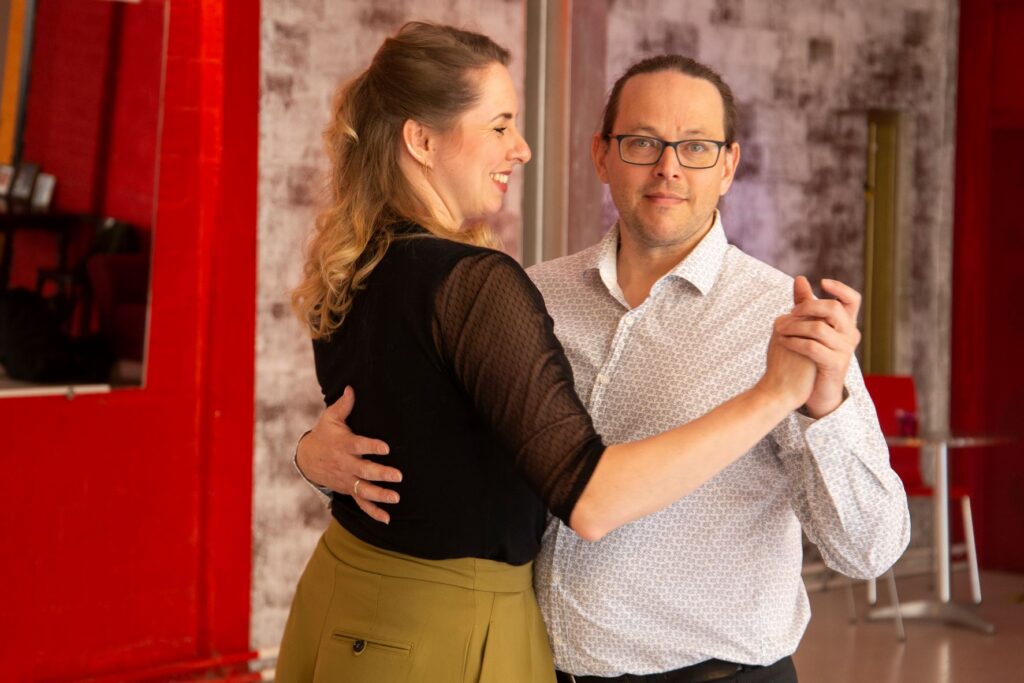What are the similarities and differences of Slow Bal and Latin? We asked a dancer who can do both: our dance teacher Mark! In this blog we will explain what the differences are between Latin and Slow Bal, how the dances are taught and what we think are some similarities. In short, a full comparison of two dances.

The main difference would be the music you dance to! Swing music has a very different vibe than Latin music. But Latin isn’t just one dance: it consists of multiple dances. So the dance will vary depending on the music you dance to. Also, Latin isn’t just danced for fun, it can also be danced at competitive levels. This means you can take lessons to train for competitions, or you can dance just for fun. This is different to Slow Bal as the dance scene is much smaller. Additionally, the dance pose is different: Latin has an open positioning of the body, whereas Slow Bal is danced in close proximity.
If you take Latin dance classes, you won’t learn just one dance, but you’ll learn five! When you dance Slow Bal, you will focus on just one single dance. When you dance Latin you also switch partners less often. For Slow Bal it is common to switch partners regularly, not only during lessons but also during socials. During a Latin dance class you often dance with the same partner for the duration of the class. There is also less room for improvisation when you dance Latin. The focus is mainly on learning how to do certain figures and fusing them together. Whereas Slow Bal is all about the art of improvisation: yes you’ll learn figures, but you have the freedom to make changes at any opportunity. Slow Bal has some fixed moves, but you can interpret them in whichever way you like. And you can add on yourself and create new ones!
In class we teach how follows can take initiative and create room to play. You will find some examples on YouTube in our playlist.
In Latin and Slow Bal the aim is to dance with a partner. Like Slow Bal, Rumba is a Latin dance that is slow, but there are fewer similarities overall. Because Lating has so many different dances that fall under its denominator, each dance has its own vibe. This vibe is dictated by the music. When you dance Slow Bal the vibe changes less often as it is one single dance, danced to slow Jazz music. Another similarity are the socials. We ask each other to dance in a similar way. We talk, we drink, we watch other people dance. Just like at a Slow Bal social you will sometimes dance with one partner for one, two or three dances. Because the music at a Latin social changes so often and the dances do as well, it is more common to dance with the same dance partner for longer.
Yes, something that truly stands out is that when dancing Latin there is less initiation by the follower. In Latin it is the leader who leads and dictates what happens on the dancefloor. All the follow can do, is well follow. Because the focus is mainly on figures during lessons, there is more of a framework to stick to and less room for improvisation. Slow Bal has more variation within the dance as it consists of single elements that are improvised continuously. What’s more, the follow can also talk back and take some initiative in the dance as well.
In short, if you are already well-versed in the world of Latin and you would like to expand your dance horizon: think of Slow Bal! At Slowfeet Studio we offer everything to acquaint yourself with this beautiful 1940s swing dance to slow music. Check out our events page to see when we organize workshops and events. Or check out our lessons page to if you wish to take the plunge and sign up for classes.